Once you know how to roast butternut squash, your life will get a lot more delicious! From how to prepare a butternut squash to yummy ways to eat it, this simple roasted butternut squash recipe can be eaten on its own or in recipes.
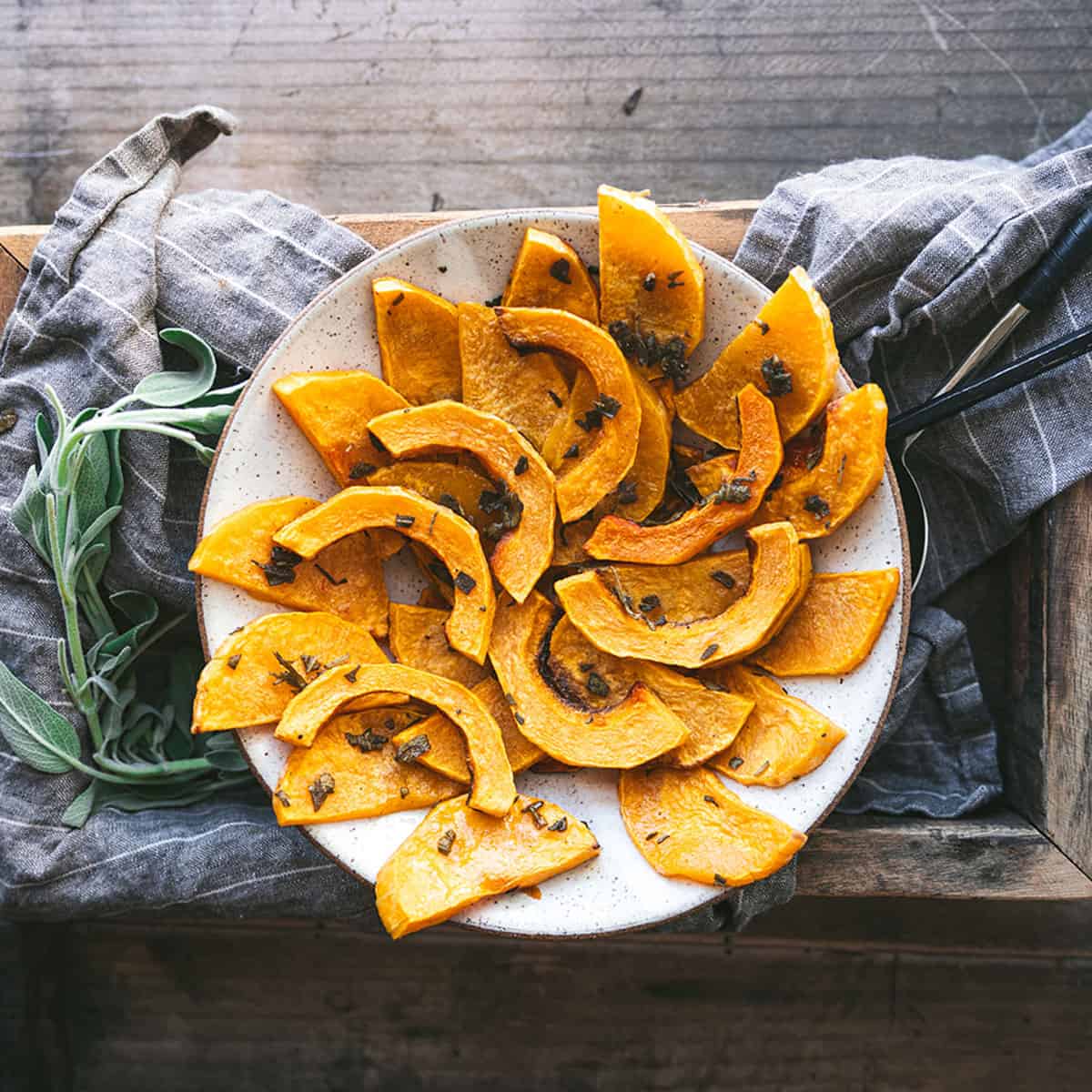
Want to save this post for later?
Oven Roasted Butternut Squash
Butternut squash can be cooked in a variety of ways, and learning how to roast it is a great place to start. A practically perfect winter squash, butternut boasts a delicious flavor that’s similar to sweet potatoes with nutty and earthy notes.
Butternut squash has a mild flavor that is tasty made either sweet or savory, and has a filling quality that lends itself well to these roasted slices, soup, stew, or mash. What a versatile squash!
With a thin beige skin and lovely orange insides, this squash is just as beautiful for fall and winter tables as it is healthy. With beta-carotene and vitamins A and C, this fiber-filled winter squash makes a healthy side dish!
This tasty fruit (that’s right, it’s technically a fruit!) is easy to grow in your garden, otherwise, it is easy to find at your local pumpkin patch or market.
This simple roasted butternut squash is easy to make and can be a stand-alone side dish or part of a larger recipe. Use this tasty recipe any way you choose to make it your own!
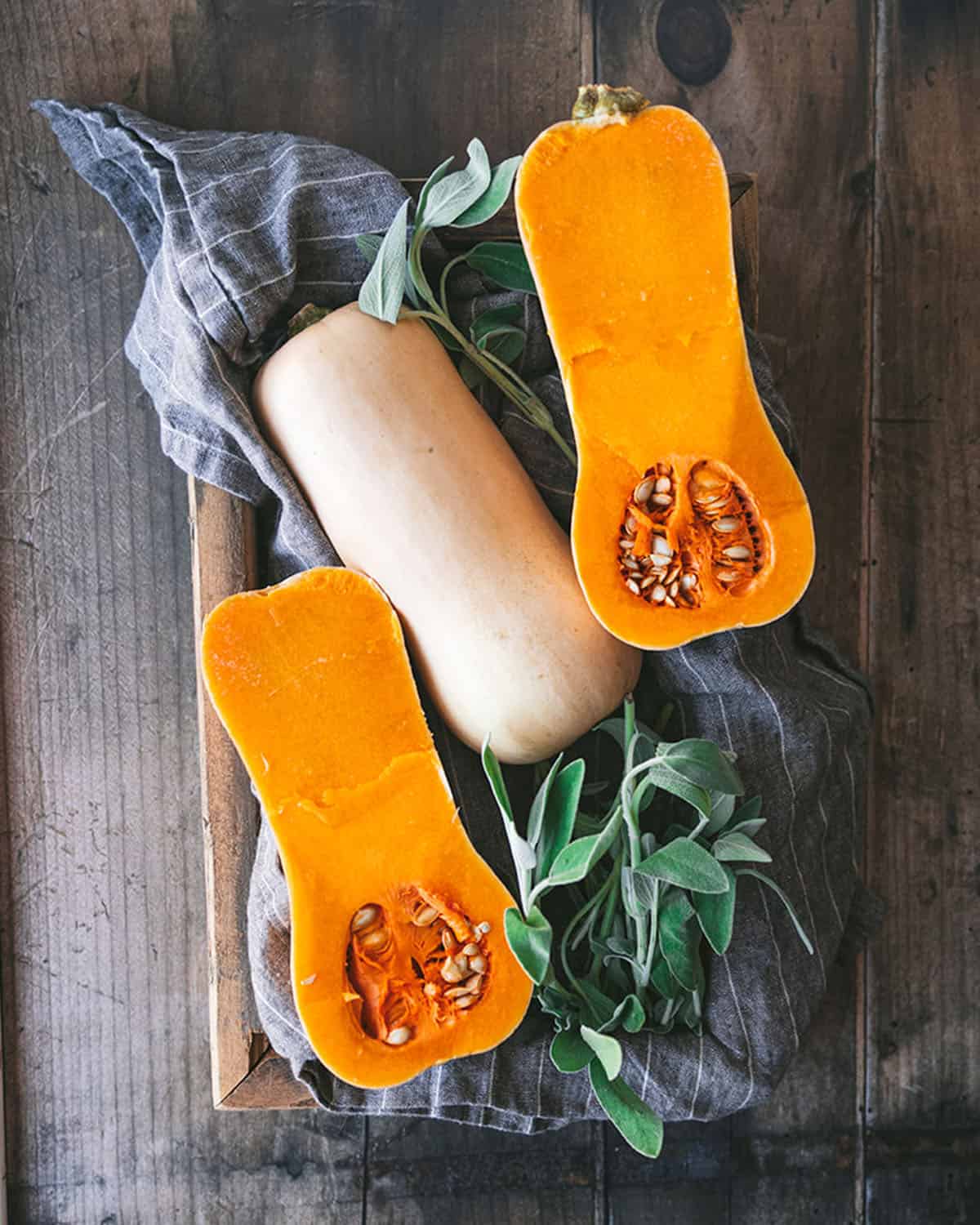
Get recipes for desserts, snacks, breads, side dishes, drinks, and preserving using apples, pumpkins, winter squash, cranberries, and more in my ebook, Cozy Autumn Recipes!
How to Roast Butternut Squash
This roasted butternut squash recipe is as easy as it gets and requires minimal ingredients. It doesn’t take much to bring out the flavor of this mild and delicious squash. Feel free to add other complimentary herbs like rosemary or thyme.
Ingredients
Butternut squash: The star of the show! I usually roast one large or 2 small squash at a time. Find them at your local pumpkin patch, farmer’s market, or produce section of a grocery store.
Extra virgin olive oil: For the best flavor I use organic EVOO, but use what you have. Feel free to substitute another oil, but I find the flavor of olive oil works best.
Salt: Just a pinch!
Fresh sage leaves: Sage from your herb garden is perfect, otherwise fresh sage is usually sold in stores in the refrigerated vegetable section.
How to Prepare Butternut Squash
Butternut squash is super simple to prepare for roasting. There is a variety of ways to cut butternut squash for roasting, but I find this method the easiest.
First, cut off the stem and base ends of the squash. Then cut the squash in half crosswise, not lengthwise.
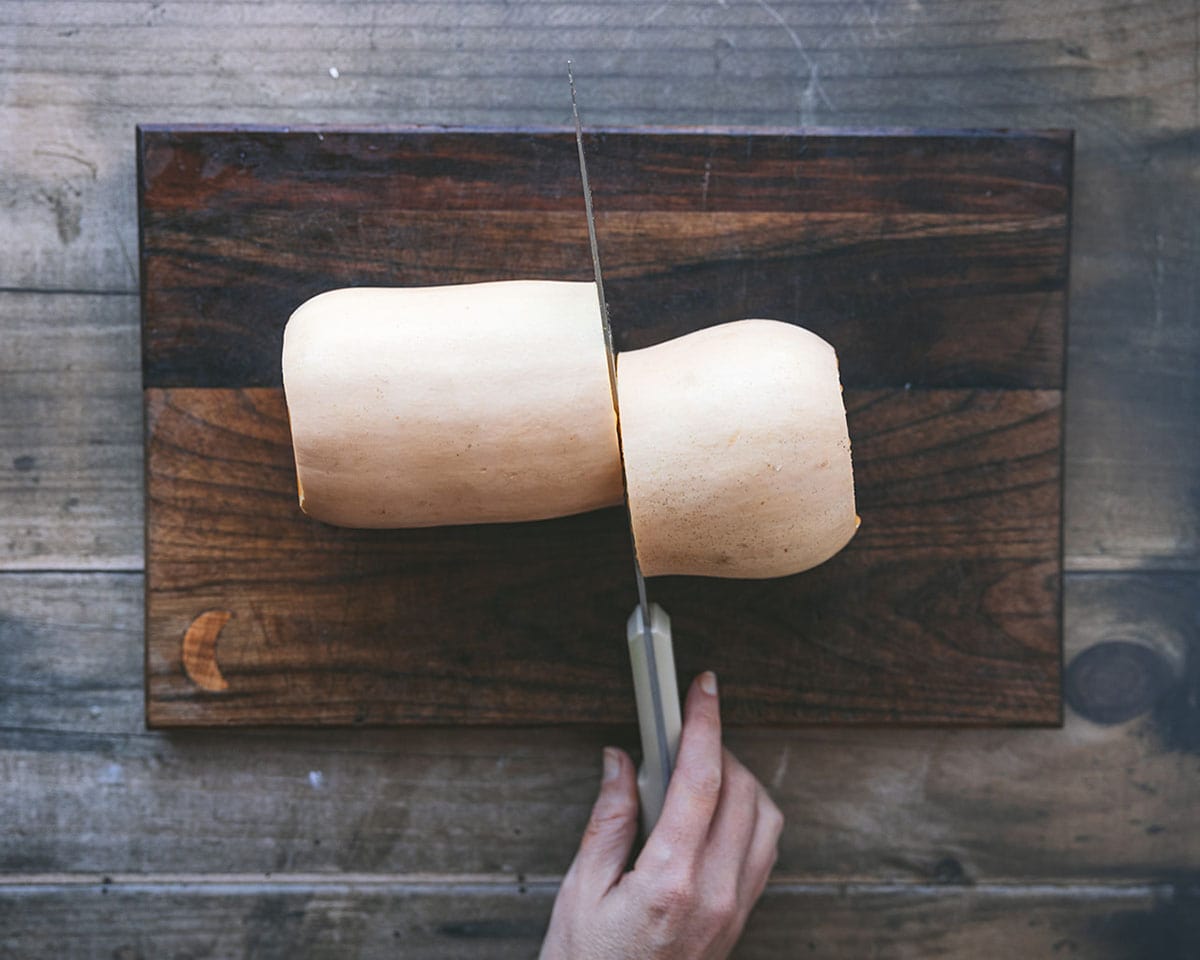
Now stand the pieces up on a flat side and use a chef’s knife or paring knife to cut off the skin.
Note: I find using a knife to get the skin off is easier than using a vegetable peeler, but if you have a good peeler that may work better for you.
Then cut each peeled chunk in half lengthwise, so you have four large pieces of squash and the seeds are exposed.
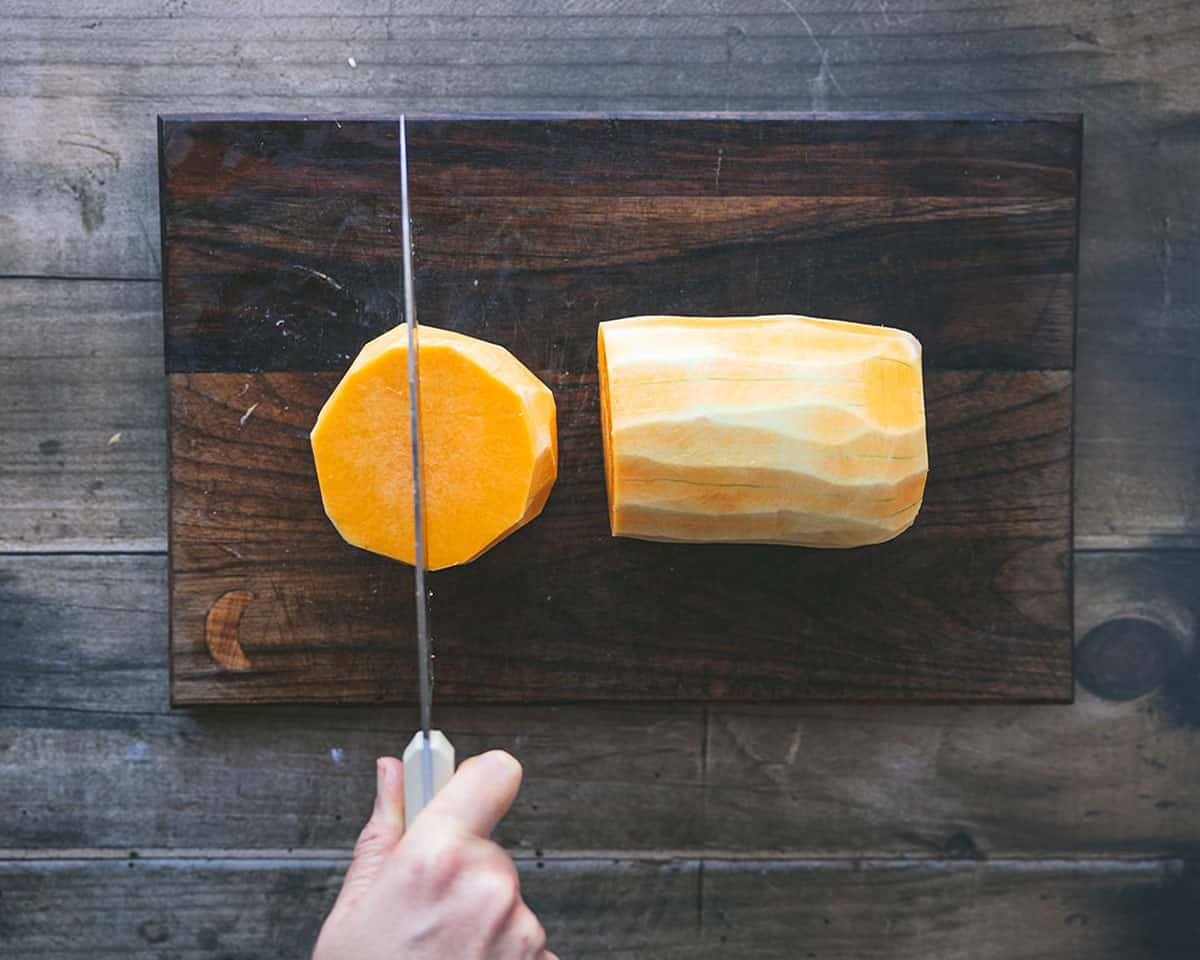
Scoop out the seeds with a spoon, making sure to scrape off any loose strings.
Now, lay the squash pieces on their flat sides and slice them into half moons that are about 1/2″ thick.

Note: If you prefer, keep cutting and make roasted butternut squash cubes. They taste the same, but just happen to be bite-sized!
When preparing the butternut squash, don’t forget to chop up the fresh sage for a perfectly paired savory fall flavor.
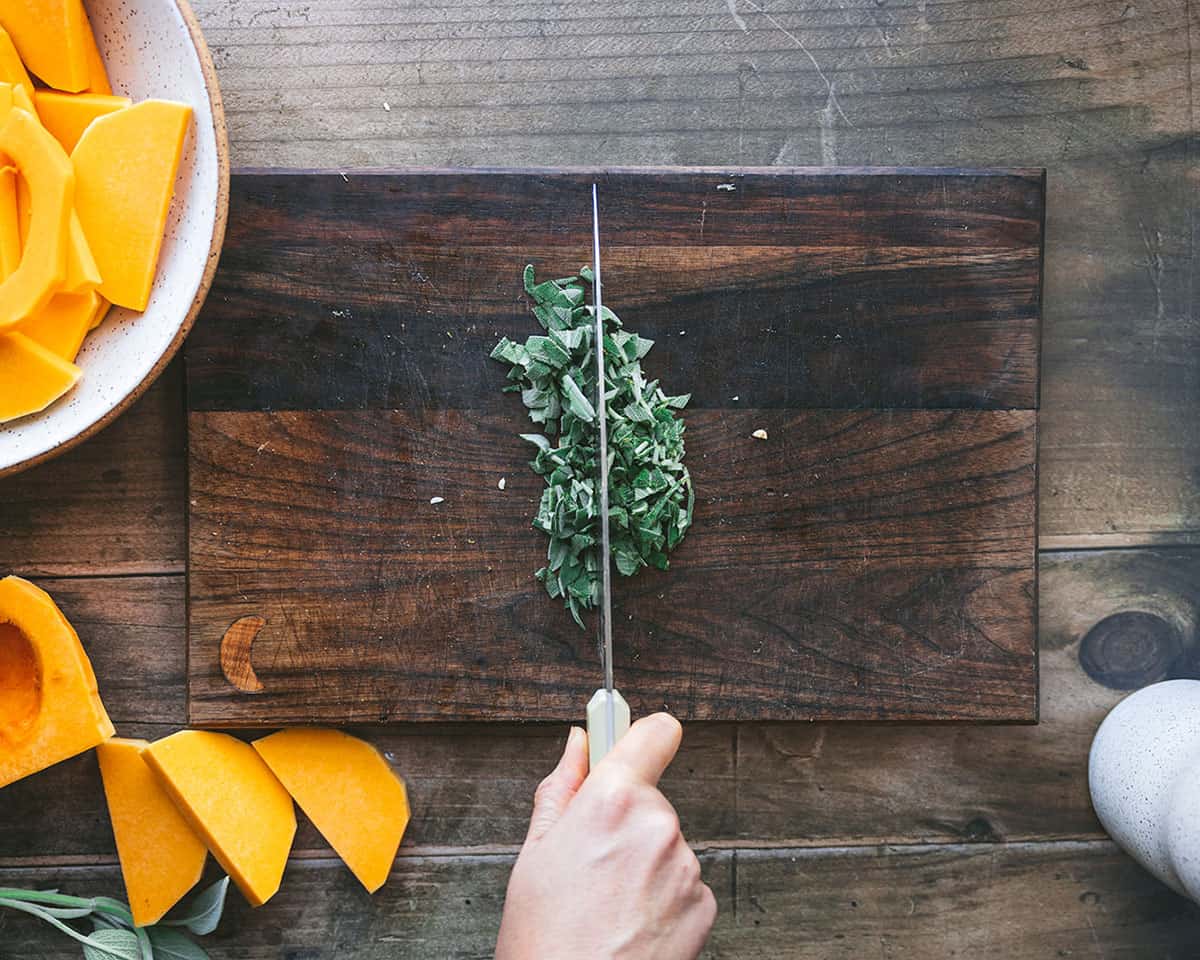
Roast the Squash
Before preparing the butternut squash, preheat the oven to 400°F (200°C).
While the oven heats up, peel and cut the butternut squash into half moons as explained above. Cubes also work for this recipe.
Once the squash is prepared, add the slices to a bowl with the olive oil, salt, and chopped sage leaves.
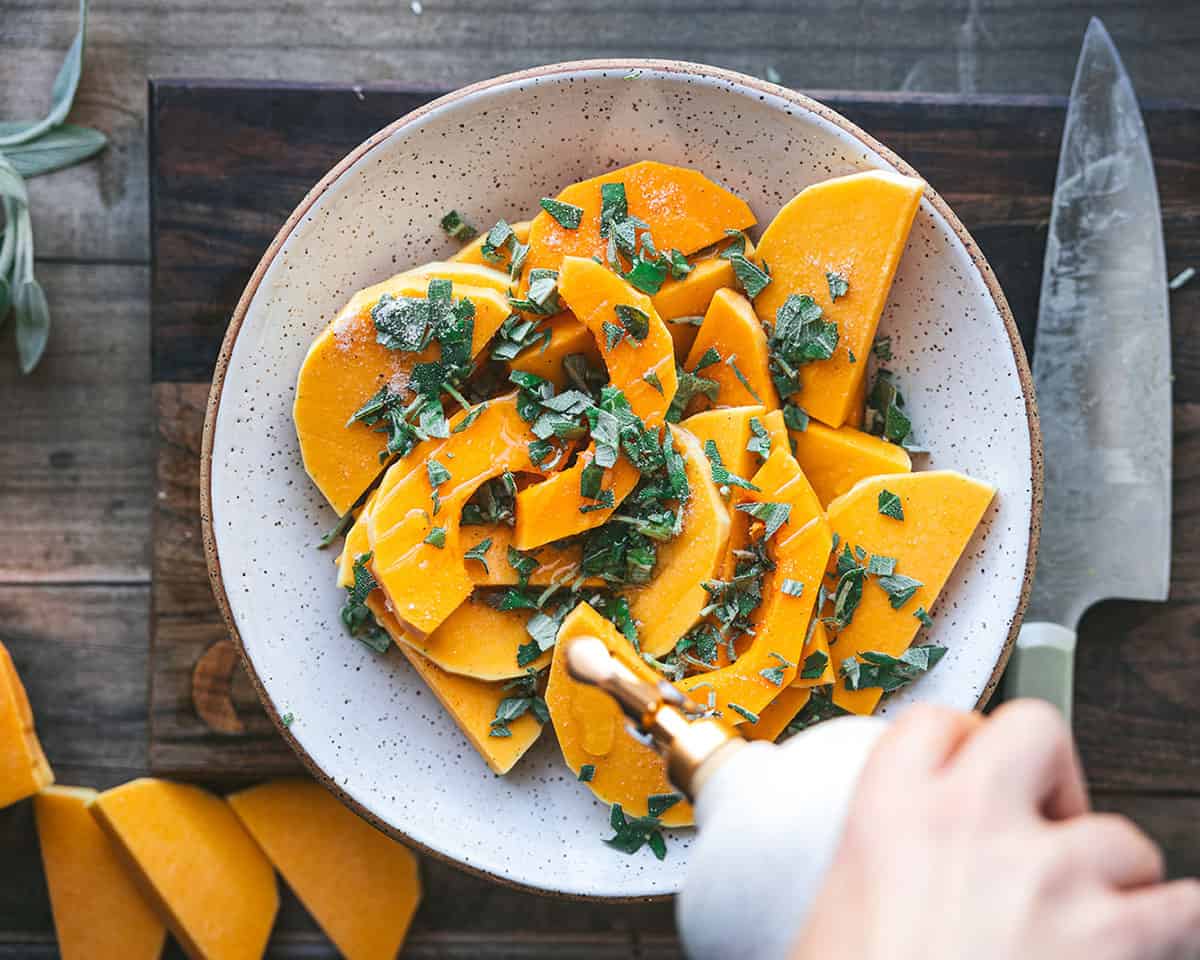
Stir the squash so it is evenly coated with the olive oil and herbs.
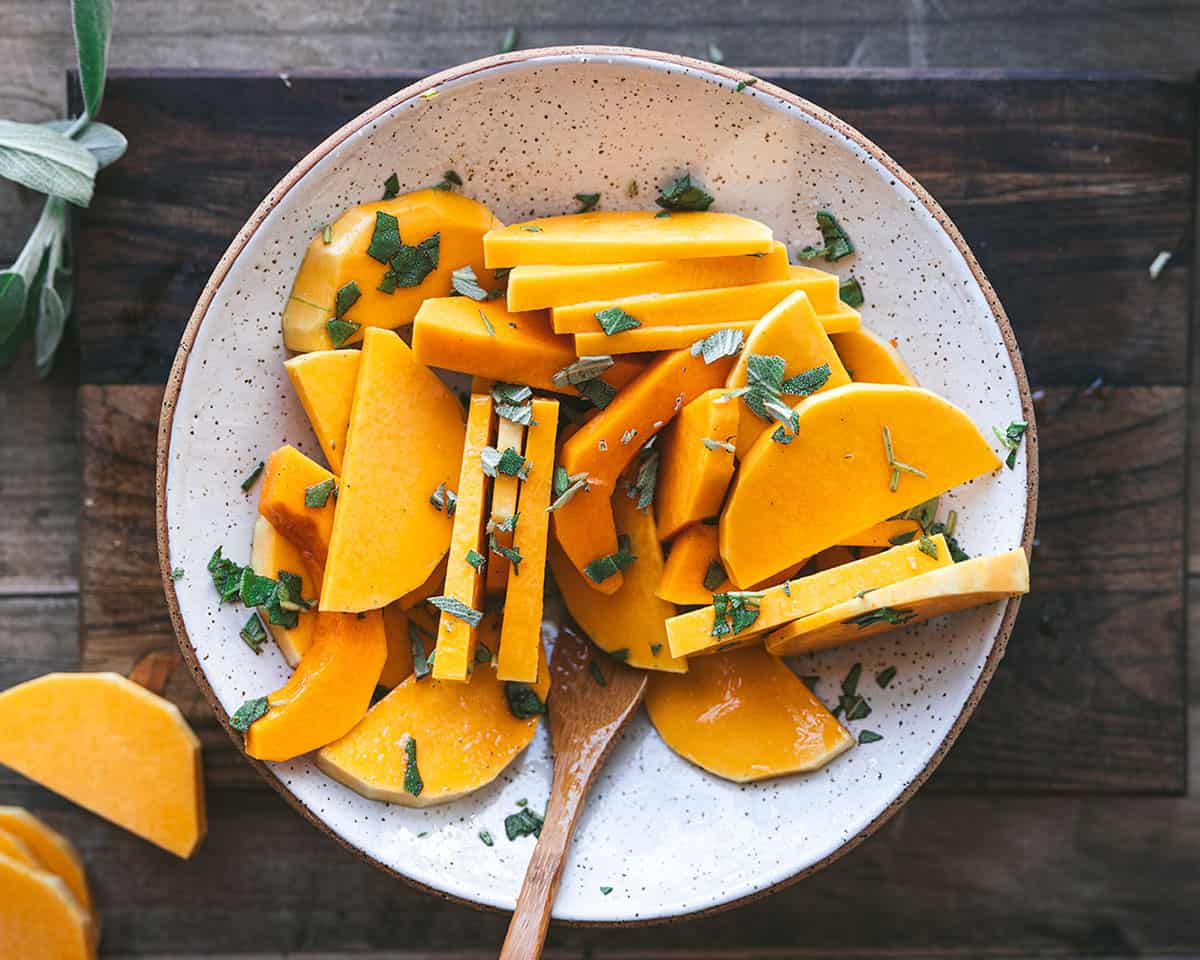
Next, spread the squash slices in a single layer onto a parchment-lined baking sheet.
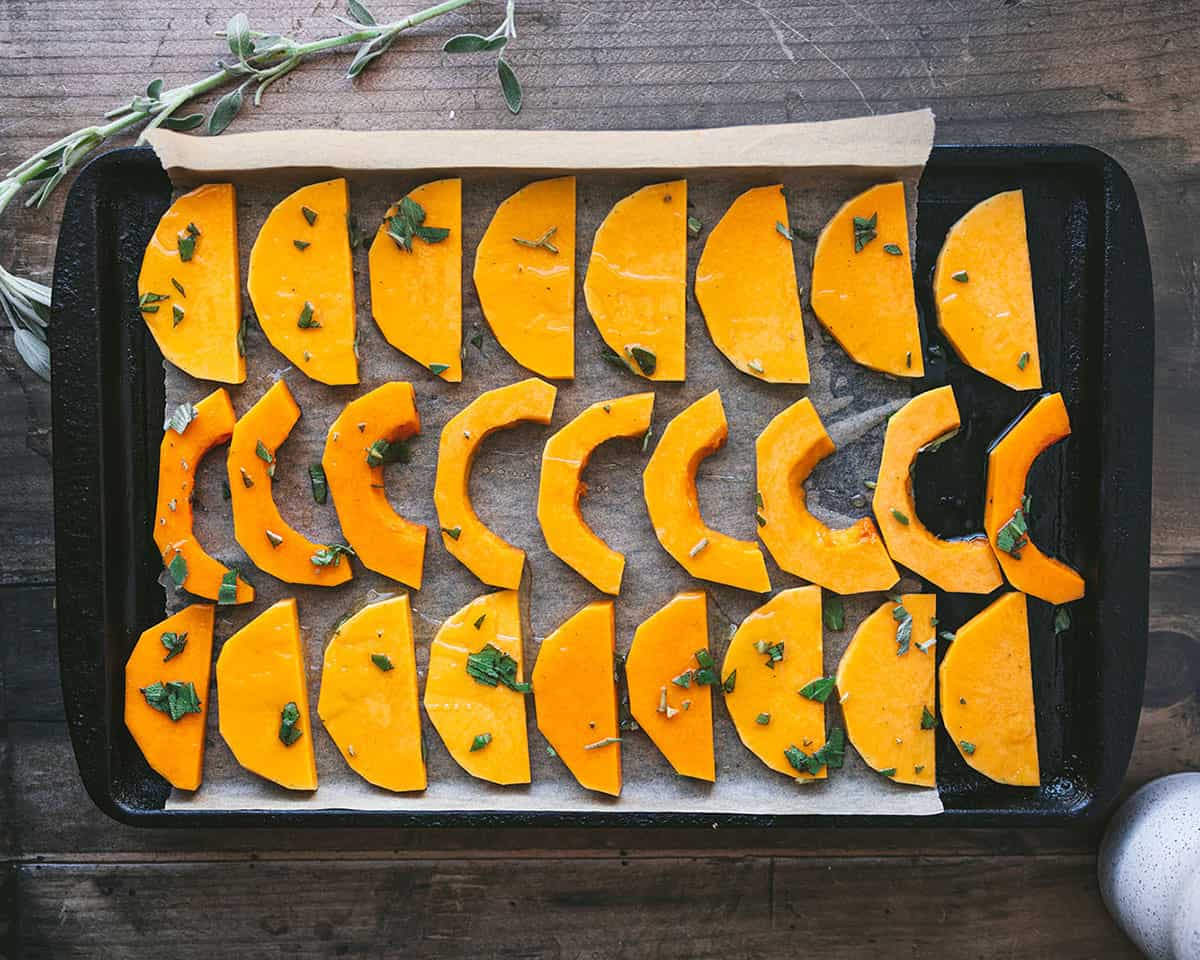
Roast the butternut squash in the preheated oven for about 30-40 minutes, flipping halfway through. You will know they are ready when the slices are tender and just starting to brown.
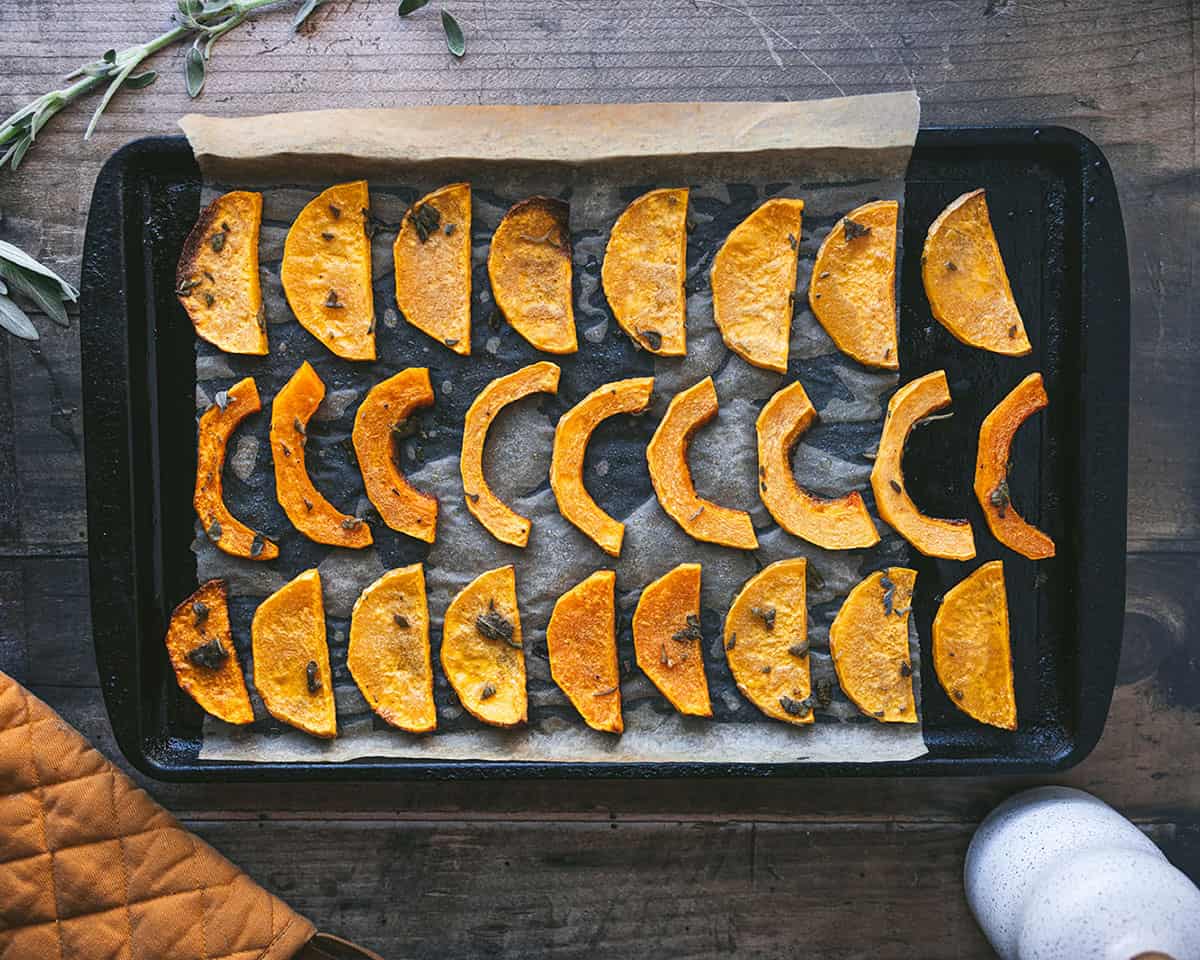
Eat and Freeze Butternut Squash
Now that you know how to roast butternut squash, you’ll realize it’s just as easy to eat as it is to make! Roasting squash is really the best way to bring out its natural flavors and is delicious to eat right out of the oven.
This roasted squash makes a perfect side dish for any fall meal and is beautiful enough to serve on Thanksgiving too. Sage and a pinch of salt are just enough to bring out the best in butternut squash.
Of course, this roasted butternut squash can also be the first step in adding it to another recipe too. Try it in this miso butternut squash congee, make roasted butternut squash soup, or add it to a rice bowl with chicken and stir-fry veggies.
If I’m honest, I put roasted butternut squash on top of so many of my fall and winter comfort meals! I put it in burritos with sriracha, on top of chili with cheese, and add cubes into my ramen. It adds a nutritious and earthy flair to any meal.
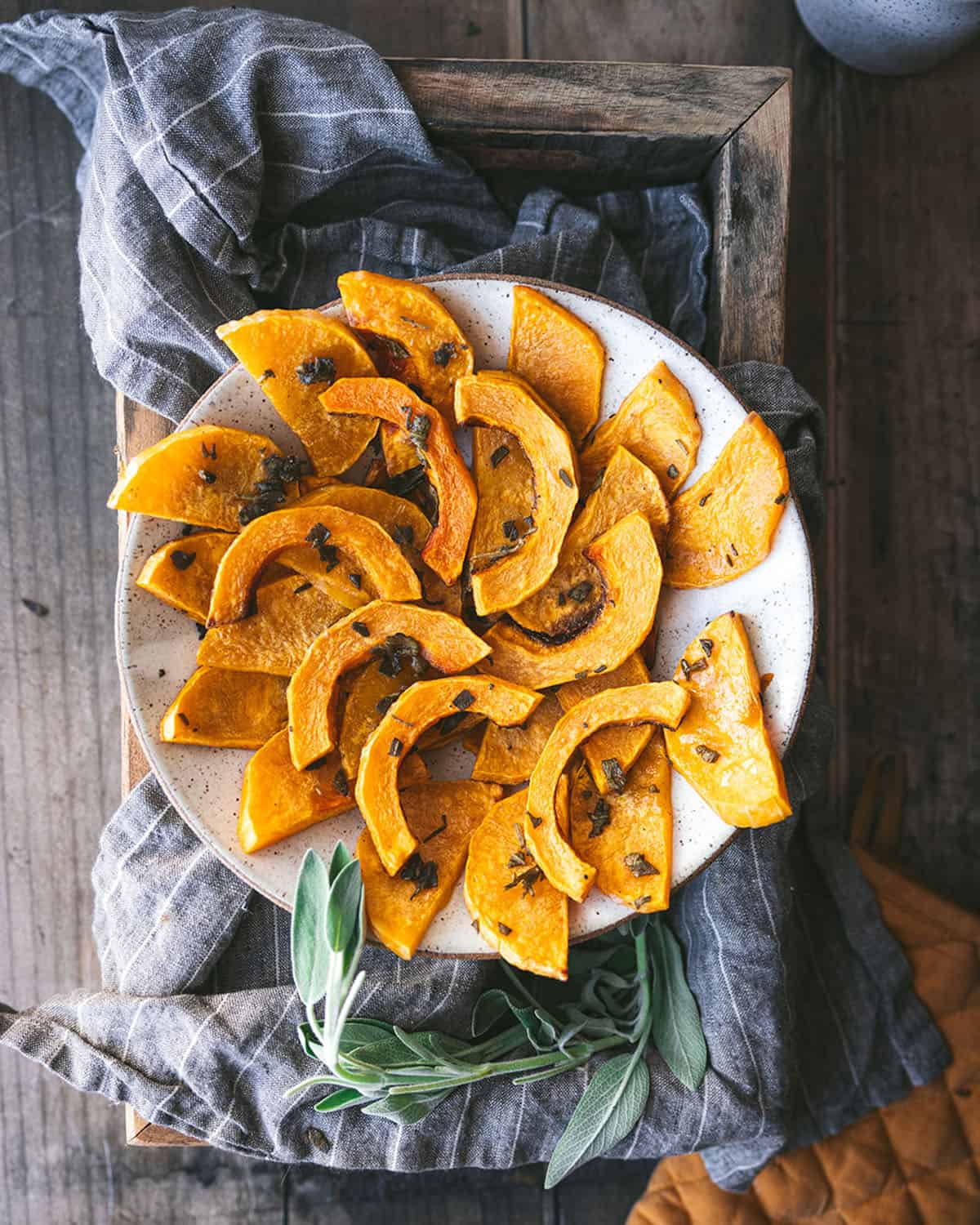
The best news when it comes to learning how to roast butternut squash is that it stores amazingly well. It can go in the fridge for about 5 days and be easily reheated in the microwave. Better yet warm it in an air-fryer for a little crisp!
While you’re at it, you might as well roast extra butternut squash, because it holds up really well in the freezer too. Just let it cool, and freeze it flat on a cookie sheet before putting it in a freezer bag. That way it won’t stick together.
Your comfort meals just got a whole lot more easy and tasty with roasted butternut squash!
How to Roast Butternut Squash FAQs
Since butternut squash grows on the ground like pumpkins, there might be a little dirt or mud on it. There’s no harm in rinsing it off with water if necessary!
There are different methods out there, but I prefer to peel the butternut squash before roasting. It is possible to leave the skin on, but when the squash is sliced it’s tricky to get the skin off the hot squash to eat.
The easiest way to peel and cut butternut squash is to cut the portions the way I describe in this recipe so they can be set flat and be able to resist pressure. Slicing off the tops, and bottoms, and placing them on flat sides makes it much easier.
I have tried ALL the ways to prepare butternut squash, and the method I describe in this recipe is by far the easiest. Butternut squash is round but oblong, uneven, and just generally awkward to prepare at best. Get a sharp knife and it’s smooth sailing with this method!
First off, make sure to not overcook it. When storing leftovers, warm them up in the oven or in the air fryer for a crisper result.
More Fall and Winter Recipes
- Roasted Brussels Sprouts with Bacon & Maple Pecans
- Pumpkin Cornbread with Maple Butter
- Simple Spiced Cranberry Sauce with Orange and Ginger
- Spiced Persimmon Bread with Honey and Ginger
- Roasted Olives with Rosemary and Garlic
- 10 Holiday Cocktail Recipes
- Fermented Honey Cranberries
- Roasted Pumpkin Wedges
- Quick Pickled Cranberries
Roasted Butternut Squash with Sage
Ingredients
- 1 large butternut squash or 2 small
- 2 tablespoons extra virgin olive oil
- pinch salt
- 4-5 fresh sage leaves roughly chopped
Instructions
- Preheat the oven to 400°F (200℃).
- Peel and cut the butternut squash into half moons (or cubes if you prefer).
- Toss the squash slices in a bowl with the olive oil, salt, and sage leaves.
- Spread the squash slices in a single layer onto a parchment-lined baking sheet.
- Roast the squash in the preheated oven for about 30-40 minutes or until they are tender and just starting to brown, flipping halfway through.


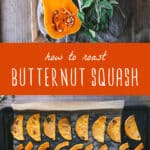
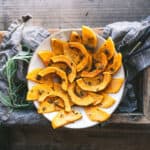

Leave a Reply